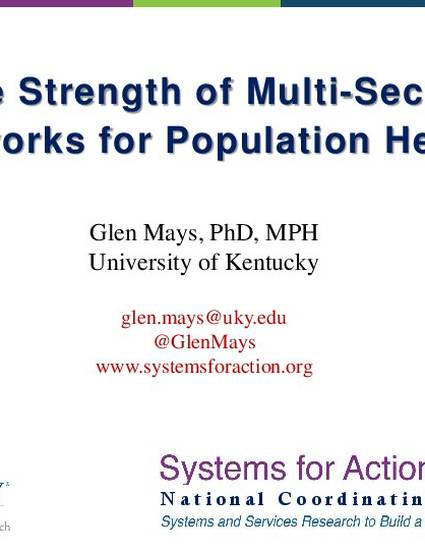
Presentation
The Strength of Multi-Sector Delivery Systems for Population Health
CMMI Geek Talk, Center for Medicare and Medicaid Innovation (CMMI), U.S. Department of Health and Human Services
(2017)
Abstract
Landmark research by Raj Chetty and colleagues finds wide geographic and intertemporal variation in the relationship between income and life expectancy in the U.S., using 1.4 billion administrative tax records from the IRS linked to nearly 7 million federal death records.1 Many questions remain about the underlying causes of these findings and their implications for policy. Another longitudinal data source, the National Longitudinal Survey of Public Health Systems, has followed more than 350 U.S. communities over more than 15 years to measure the types of population health activities implemented in these areas and the networks of community organizations that contribute to these activities.2 This study links Chetty’s income and life expectancy data with the 1998-2016 National Longitudinal Survey of Public Health Systems to examine whether and how the strength of multi-sector networks in population health influence income-related disparities in life expectancy over time.
Disciplines
Publication Date
Spring May 24, 2017
Location
Baltimore, MD
Citation Information
Glen P. Mays. "The Strength of Multi-Sector Delivery Systems for Population Health" CMMI Geek Talk, Center for Medicare and Medicaid Innovation (CMMI), U.S. Department of Health and Human Services (2017) Available at: http://works.bepress.com/glen_mays/306/
